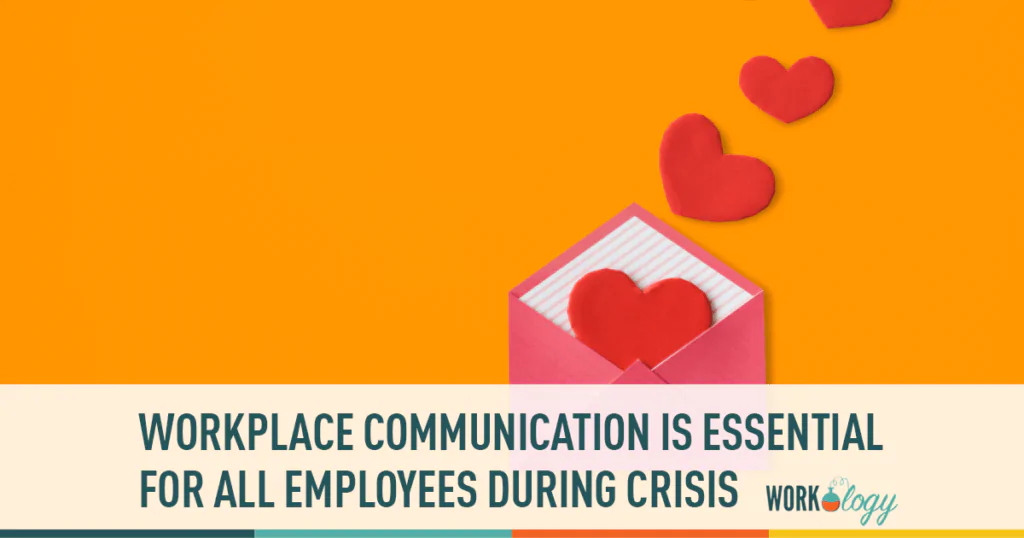It’s challenging to keep up with the extraordinary nature of the COVID-19 situation because things are moving so quickly. Whether we have vital employees or a section of our workforce on furlough, employee communication will be a priority for corporate and HR management. Your organization is looking to you for direction and information, and how you manage communication during a crisis has such a significant impact on your employer brand that a mistake could result in long-term harm.
Maintaining continual communication with furloughed staff is just as important as communicating with colleagues who are suddenly working remotely or providing safety advice for your vital personnel. Tens of thousands of workers at large U.S. corporations including Honda, Disney, and Best Buy as well as businesses in the restaurant, entertainment, retail, and education sectors as well as state, local, and federal agencies have been placed on furlough.
If you’re not communicating, you’re losing the trust of your employees and contributing to panic during a crisis. We need to be communicating with employees during this uncertain time whether you’re going through layoffs, furloughs, or you are continuing business as usual.
Essential Employee Communication During a Crisis Especially When Furloughed
While we have to keep an eye on the bottom line, communicating with employees should be the first thing on your list all day, every day. We talked a bit about communication in our comprehensive Furlough Guide. Here, we’ll go into more detail about best practices for communicating with your employees during a crisis, especially those employees who have been furloughed or may be laid off.
Update employee contact information.
Things have been happening so rapidly, it’s likely that you haven’t had time to update employees’ personal contact information in your HRIS. If you are in furlough, or preparing to do so, now is the time to reach out to them. If you have to furlough employees, they will not have access to their work emails because you deactivated them (the same goes for layoffs). Ask your managers to gather the information from their teams and update those contacts in your database so you can include their email addresses on employee communication.
If you feel like you’re over-communicating, you’re doing it right.
This crisis didn’t come with a playbook, so your employees are going to be looking to you for guidance. If you’re sending updates to your employee network and extended (furloughed) employees on projections for work changes, when you expect to return to normal work functions, what your state and local authorities recommend, and any executive level decisions multiple times a day, you cannot “over communicate” right now. Your current active workforce needs to know what you’re doing to keep them safe and your remote or furloughed employees need to feel included and informed.
Create a resource list for support.
This can be disseminated via email from HR to an all company address and should include your Employee Assistance Program (EAP) hotline or a local resource where your employees can get support for things like health resources, childcare, or coping with emotional or financial stress. In the light of a pandemic, this might be which stores still have toilet paper in stock and time off to go shop for necessities should they find themselves working from home, in quarantine, or sick. These are small but meaningful ways to support your active and dispersed teams.
Extend resources for employees who were furloughed or laid off.
You have a talent newsletter, your (now) former employees are on it, what resources can you share that HR didn’t during their exit interview? If your layoffs happened before March 18, 2020, your former employees may not know that the Families First Coronavirus Response Act (FFCRA) was passed in response to the spread of COVID-19. The act brings relief to states in need of funds to pay unemployment insurance to claimants, and in some states, increases the amount of unemployment payments.
Your current and recent employees should know what you know.
While you can’t bring everyone into the decision room, you can implement a rapid communication plan to reach out to your current and recent workforce with information on company decisions as soon as you are made aware of them. For example, if your company leaders expect to lay off a portion of employees who were initially furloughed, don’t wait to let them know. If a furloughed employee thinks he or she has a job waiting for them after a furlough, they will be less inclined to prepare for a job search. Yes, they’re also getting unemployment, but they do need to know if they need to work on their resume and how soon that might happen.
Give out contact information.
Whether this is for HR or company leaders, your current and recent employees should be given the opportunity to ask questions, clarify information, and offer feedback. Communication transparency means that you encourage a dialogue rather than just disseminating information. The last thing we want our workforce to feel right now is helpless. A feedback loop is necessary to ensure employees’ voices are heard.
Communication Transparency Is Key Moving Forward Post-COVID-19
Transparency doesn’t just protect your employer brand during a crisis; it’s also the right thing to do. If your communication puts employees first, this is what they will remember at the end of a furlough (or in a year, three years, five years). This crisis is a major life event, and we’re all going to remember how our employers responded when it happened.







